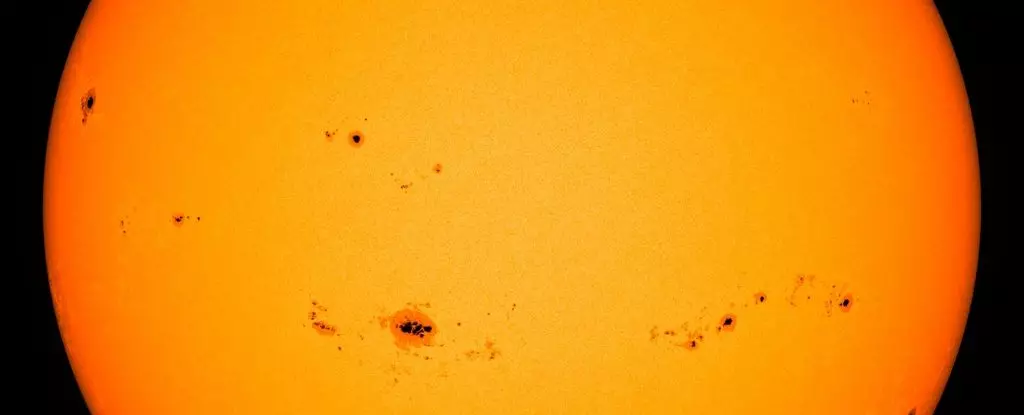The cosmos operates on its own unique rhythms, and one of the most significant cycles affecting our planet is the solar activity cycle. This 11-year cycle of sunspot formations, solar flares, and coronal mass ejections (CMEs) directly impacts space weather and, consequently, life on Earth. Recently, organizations such as NASA and the National Oceanic and Atmospheric Administration (NOAA) have announced the onset of solar maximum—a period characterized by an increase in solar activity as the Sun prepares to transition through its peak phase.
Solar maximum signifies the apex of solar activity—with sunspots, flares, and other solar phenomena culminating in an astronomical spectacle. However, the complexities of predicting the exact intensity and timing of these solar events remain a significant challenge for scientists. As we navigate through this exciting period, understanding the mechanics behind these cycles becomes increasingly vital.
Despite advancements in solar research, predicting the exact nature of solar activity remains elusive. As Michael Wheatland, a solar astrophysicist, pointed out, the mechanisms driving the solar dynamo—the process that generates the Sun’s magnetic field—are still not entirely understood. The 11-year cycle, while a consistent pattern, exhibits an array of variations that complicate predictions.
Although sunspots can provide a useful metric for tracking solar activity, they do not provide a foolproof schedule for peak solar events. For instance, the precise month or year when solar activity will reach its climax continues to baffle scientists. As noted by NOAA meteorologist Elsayed Talaat, the media announcement of solar maximum simply signifies a phase in the ongoing cycle rather than a definite indicator of peak activity. This uncertainty emphasizes that solar physics still holds numerous mysteries.
At the heart of solar activity lies the phenomenon of sunspots—dark regions on the Sun’s surface resulting from localized magnetic fields disrupting the flow of hot plasma. These spots are vital indicators of solar activity trends; during solar minimum, sunspots significantly dwindle, while their numbers burgeon during solar maximum. The relationship between sunspot numbers and the subsequent solar events—specifically, solar flares and coronal mass ejections—serves as a crucial area of focus for solar scientists.
When the intricate magnetic lines of force in a sunspot conglomerate become unstable, they can snap and release immense amounts of energy, leading to solar flares. These eruptions can generate radiation bursts that may disrupt radio communication and satellite functions on Earth. CMEs, on the other hand, can eject vast quantities of solar material into space, potentially causing geomagnetic storms upon collision with Earth’s protective magnetosphere. These disturbances can give rise to beautiful auroras but may also have disruptive effects on technology.
The ongoing solar cycle will bring both challenges and wonders. Although the current predictions about solar activity have surpassed preliminary forecasts, researchers are keen to analyze recent solar events further. The recent prominence of phenomena like auroras is indicative of frequent interactions between solar particles and Earth’s atmosphere. However, despite the increasing solar activity, we currently remain outside significant danger.
The most powerful eruption within the ongoing cycle was an X9.0-class flare, which ranked among the most powerful observed. While noteworthy, it pales in comparison to some historical giants that occurred in previous solar cycles. Hence, while current solar activity reigns stronger than predicted, it remains within ordinary ranges.
As we explore this unprecedented solar maximum phase, astronomers and astrophysicists are presented with opportunities not only to enhance predictions but also to delve into the underlying solar mechanisms that govern these cycles. The implications of refined predictions could lead to a more profound understanding of solar dynamics and improve models for forecasting space weather—key for safeguarding technology and human activities reliant on satellite and communication systems.
The inception of solar maximum heralds a period of excitement and curiosity for scientists and enthusiasts alike. As we bear witness to the Sun’s spectacular displays, the quest for knowledge surrounding these cosmic cycles continues, promising to unlock secrets that have eluded human understanding for centuries.


Leave a Reply